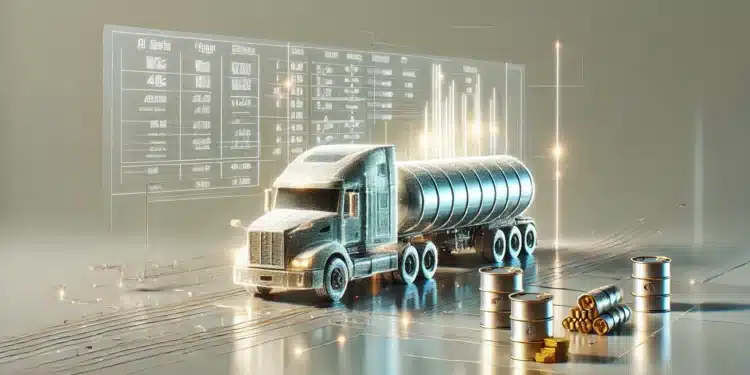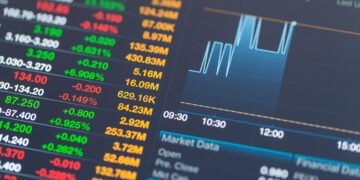The integration of artificial intelligence into commodity trading has ushered in a new era of market sophistication, fundamentally changing how traders operate and how markets function. This technological revolution extends far beyond simple automation, creating new opportunities while simultaneously raising important questions about market stability and fairness.
Revolutionizing Price Prediction
The traditional approach to commodity price forecasting, heavily reliant on human analysis and basic statistical models, has been dramatically enhanced by artificial intelligence. Modern AI systems can process vast amounts of data from diverse sources – from weather patterns affecting crop yields to geopolitical events impacting oil prices – delivering predictions with unprecedented accuracy.
These systems excel by identifying subtle patterns and correlations that human analysts might miss. By combining neural networks with traditional rule-based analysis, traders can now capture both the mathematical precision of algorithms and the nuanced understanding of market dynamics. The result is a more sophisticated approach to price prediction that consistently outperforms conventional methods.
The High-Frequency Trading Revolution
The marriage of AI and high-frequency trading has transformed market dynamics at a fundamental level. Modern trading systems can execute thousands of transactions per second, operating at speeds far beyond human capability. These systems don’t just trade faster – they adapt their strategies in real-time, learning from market conditions and adjusting their approach accordingly.
The impact of this technology extends beyond simple speed advantages. AI-driven high-frequency trading has created new market patterns and dynamics, forcing all participants to evolve their strategies. However, this technological arms race has raised concerns about market stability. The potential for flash crashes and other market disruptions has led to ongoing debates about appropriate regulation and safeguards.
Reshaping Market Efficiency
AI’s influence on market efficiency operates on multiple levels. By reducing information asymmetries and enabling faster price discovery, AI-powered trading systems have generally improved market liquidity and reduced bid-ask spreads. This enhanced efficiency means markets respond more quickly to new information, theoretically leading to more accurate pricing.
However, this improvement in technical efficiency comes with important caveats. The dominance of AI systems raises questions about market accessibility and fairness. Smaller traders without access to sophisticated AI tools may find themselves at a disadvantage, potentially creating a two-tiered market structure.
The Volatility Challenge
The increasing role of AI in commodity trading has coincided with greater market volatility. This isn’t merely coincidental – the interconnectedness of markets enabled by AI systems means that movements in one market can quickly cascade through others. The financialization of commodity markets, accelerated by AI trading, has led to stronger correlations between commodities and traditional financial markets.
This increased volatility presents both opportunities and challenges. While skilled traders can profit from price movements, excessive volatility can distort markets and complicate long-term planning for businesses dependent on commodity prices. Managing this volatility requires sophisticated risk management strategies, themselves increasingly reliant on AI tools.
Ethical Considerations and Regulatory Frameworks
The rise of AI in commodity trading has sparked important ethical debates. Questions of fairness, transparency, and market manipulation have taken on new dimensions in an AI-dominated trading environment. Concerns about data privacy and algorithmic bias must be balanced against the benefits of increased market efficiency.
Regulators face the challenge of developing frameworks that ensure market stability and fairness without stifling innovation. This requires a delicate balance – too much regulation could hamper beneficial technological advancement, while too little could expose markets to unnecessary risks. The global nature of commodity markets adds another layer of complexity to regulatory efforts.
Sustainability and Social Responsibility
An emerging trend in AI-driven commodity trading is the integration of environmental, social, and governance (ESG) criteria into trading algorithms. This represents a significant shift from purely profit-driven models to more holistic approaches that consider broader societal impacts.
Modern AI systems can analyze vast amounts of sustainability-related data, from carbon emissions to labor practices, incorporating these factors into trading decisions. This capability is particularly relevant as investors and consumers increasingly demand responsible trading practices that align with sustainable development goals.
The Future Landscape
The evolution of AI in commodity trading shows no signs of slowing. Emerging technologies like quantum computing promise to further revolutionize the field, offering even greater computational power for analysis and prediction. Machine learning algorithms continue to become more sophisticated, potentially leading to even more accurate price forecasts and trading strategies.
However, this technological progression must be managed carefully. The integration of new technologies should enhance market function while maintaining stability and fairness. This requires ongoing collaboration between market participants, regulators, and technology developers.
Implications for Market Participants
For traders and market participants, adapting to an AI-dominated trading environment is no longer optional. Success increasingly depends on effectively leveraging these technologies while understanding their limitations and risks. This doesn’t necessarily mean every trader needs to become an AI expert, but it does require a basic understanding of how these systems work and their impact on market dynamics.
The human element remains crucial, particularly in interpreting broader market contexts and making strategic decisions. AI systems excel at processing data and executing trades, but human judgment is still essential for setting overall strategy and responding to unprecedented situations.
Conclusion
The transformation of commodity trading by artificial intelligence represents both an opportunity and a challenge for market participants. While AI has undoubtedly improved many aspects of trading, from price prediction to execution, it has also introduced new complexities and risks that must be carefully managed.
Success in this new environment requires a balanced approach – embracing technological innovation while maintaining awareness of its limitations and potential drawbacks. As AI continues to evolve, market participants must stay informed and adaptable, ready to leverage new capabilities while managing associated risks.
The future of commodity trading will likely see even greater integration of AI technologies, but the goal should remain consistent: creating more efficient, fair, and sustainable markets that benefit all participants while supporting broader economic stability and growth.
Acknowledgment: This article was written with the help of AI, which also assisted in research, drafting, editing, and formatting this current version.







